Flamethrower tank M67 (USA)
The order to start work on a new project was signed on October 11 of the year 1945. In accordance with this document, the industry had to develop a specialized version of the medium tank M26 Pershing, having the main weapon in the form of a flamethrower. The project received the working designation T35. By 1948, the defense industry specialists proposed five options of the project at once, which had certain features. Minimal modifications were proposed to the existing structure, using a large fixed stationary instead of a tower, etc. In one of the preliminary projects, it was even planned to use a towed trailer with a cistern for the fire mixture, similar to that used in the British project Churchill Crocodile.
In October 1948, the command completed an analysis of the existing proposals and made conclusions. Warlords considered the creation of new flamethrower tanks impractical. Flamethrowers were recommended to be installed on equipment as auxiliary weapons, but specialized armored vehicles were considered unpromising. As a result, the T35 project was closed. Work on flamethrowing tanks stopped for a while.
To the existing ideas returned only after the start of the war in Korea. The US Marine Corps demanded to resume work and create a tank with the main flamethrower armament. During the last conflicts, the Marines used tanks as a means of fire support for infantry in short-range battles. In such conditions, flamethrower tanks were of particular interest. However, in Korea, the marines had to use flamethrowing armored vehicles of outdated models with insufficient characteristics. Existing combat experience and current problems led to the emergence of a new order.
The use of ready-made solutions and developments created in the course of the T35 project allowed us to a certain extent to speed up the development of a promising machine for the ILC. The new project involved the use of an experienced medium tank T42, which instead of a standard gun, was supposed to carry an inkjet-type flamethrower and tanks for the fire mixture. Designing a new turret with the required weapons complex took some time. By the time this work was completed, the T42 project was closed. Now the medium tank M47 Patton was to be the carrier of the tower with a flamethrower. At this stage, the flamethrower tank received the designation T66.
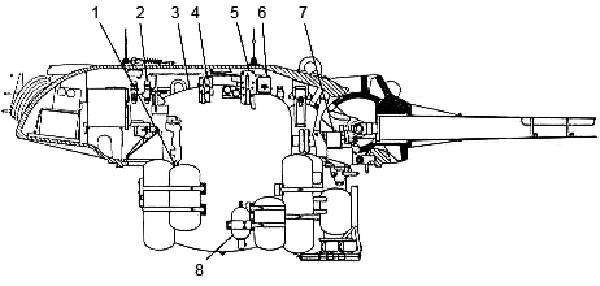
The layout of the tower, left view. Picture Hunnicutt RP "Patton: A History of American Medium Tank Volume I"
The medium tank M47 at that time was considered as a temporary measure, with the help of which the army could wait for more modern equipment. Because of this, with 1952, the design of the armored vehicle type M66 was used in the T48 project. The next change of the base chassis led to the emergence of a new designation T67. Fortunately for the project, in the future we managed to do without new cardinal changes, due to which the appearance of a full-fledged flame-thrower tank was formed and subsequently implemented.
The existing serial medium tank was chosen as the basis for a promising combat vehicle, which greatly simplified the development of the project and the deployment of mass production. From the point of view of the overall architecture, the T67 flamethrower was a modified M48 with new weapons and a different composition of the fighting compartment equipment. The hull, turret, power plant, chassis and auxiliary weapons remained the same. It should be noted that all this not only simplified production, but also solved one of the main tasks of the project. The customer required the flamethrower tank to look like a standard M48. The similarity of the equipment made it possible to reduce to a certain extent the risks for the flamethrower armored vehicle, reducing the probability of its correct identification.
T67 "inherited" the existing cast armor corps. The corpus had a semi-elliptical frontal part with a thickness from 61 mm (bottom) to 110 mm (top). Curved sides with niches and protrusions had a thickness of up to 76 mm, feed - up to 30 mm. It should be noted that the exact parameters of the thickness of the armor depended on the model of the base chassis. As the M48 and T67 tanks developed, similar parameters changed within certain limits. The layout of the hull was traditional. In the front part of it, there was a control compartment, in the center - a fighting compartment, in the stern - engine and transmission compartment.
The T67 tank had to be equipped with a Continental AV-1790 engine, and vehicles of different series could have engines of various modifications. The engines used in the early production batches showed horsepower up to 690 hp. Subsequently, this parameter was brought to 750 hp. The engine was connected to a Allison CD-850 two-flow hydromechanical transmission.
As part of the chassis of the tank there were six road wheels on each side. The rollers were equipped with an individual torsion suspension, and also had spring travel stops. Two front and two rear pairs of rollers were completed with additional shock absorbers. In front of the side there were guide wheels, similar to the support rollers, in the stern - leading. The upper branch of the caterpillar was to lie on three or five supporting rollers.
In the course of the T66 / T67 projects, the American specialists developed a new range of weapons based on a jet flamethrower. All new units were placed in a common tower type T7. This product was a modified standard tower tank M48, devoid of most of the source equipment. An existing cast dome hemispherical shape with a developed feed niche was used. The maximum thickness of the armor tower reached 178 mm in the frontal part. Boards and feed were thinner - 76 and 51 mm, respectively. Applied 114-mm armor mask frontal embrasure. It is curious that the construction of the tower in the framework of the new project has not undergone major external changes. So, all the external elements remained in their places, right down to the rangefinder housing. The rangefinder itself was absent in the tower.
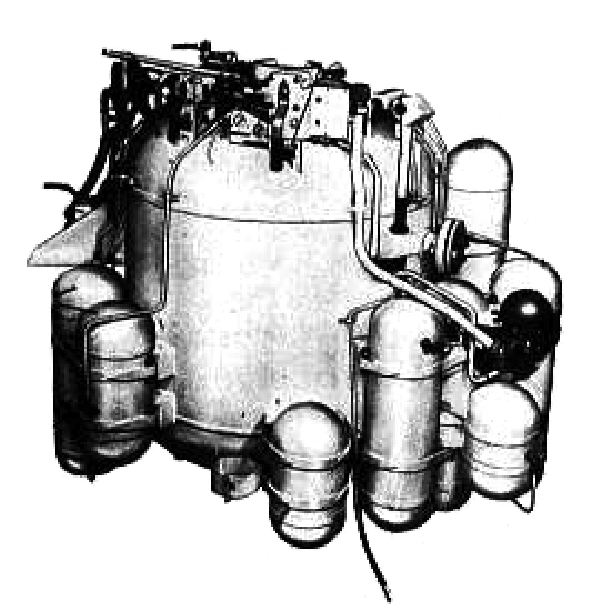
Fire cylinders and compressed gas inside the crew compartment. Picture Hunnicutt RP "Patton: A History of American Medium Tank Volume I"
The main weapon of the prospective armored vehicle was to be the jet type flamethrower model M7-6. The composition of this system included a fire engine, an ignition system, a fire extinguishing system for extinguishing fire mixture, as well as means for storing and supplying a flammable liquid. In the front embrasure of the turret, on the standard fastenings of the tank gun, they placed the rocking installation of the fire engine. In connection with the demands for masking, the latter received a tubular casing with imitation of the muzzle brake. Such a disguise did not provide one hundred percent similarity, but still seriously hampered the identification of technology. The storage and supply system of the fire mixture was placed on the left side of the tower, in the place of the loader. For obvious reasons, it was perhaps the largest unit in the fighting compartment.
Inside the casing of the hose, at some distance from its front cut, was placed a plate with nozzles for ejection of the fire mixture. Two sprayers with holes with a diameter of 19 and 22 mm were used. There were also electrodes of the spark ignition system, as well as the nozzle of the carbon dioxide forced extinguishing system for the remnants of the mixture, which are dangerous for the casing.
For storage of "ammunition" it was proposed to use a large cylindrical tank with a volume of 398 gallons (1506 l). At the same time for the correct operation of the system had to leave free space, filling only 365 gallons (1381 l) of the fire mixture. There was also an extra tank for the 10,2 gallon (38,6 l) of ungassed gasoline needed to start the flamethrower at low temperatures. The release of fluid was to be carried out using compressed air stored in a tank with a volume of 0,28 cubic meters under a pressure of 22 atm.
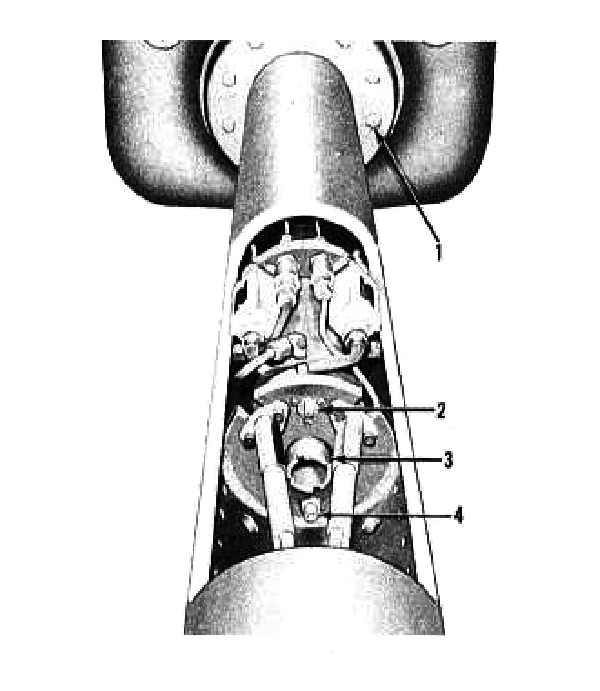
The design of the hose (casing partially removed). Picture Hunnicutt RP "Patton: A History of American Medium Tank Volume I"
Directing a flamethrower at the target was proposed using standard electro-hydraulic actuators of the tower. There was the possibility of firing in any direction at elevation angles from -12 ° to + 45 °. The maximum calculated range of flame throwing reached 200 m, but in practice it could be about half as much. With the release of fire through the 19-mm nozzle ammunition enough for 61 with "shooting", through 22-millimeter - for 55 seconds.
The use of new weapons allowed to review the composition of the equipment installed in the tower. The tank no longer needed a ballistic computer and a range finder. In addition, it became possible to use only a standard periscope sight for guidance. The type of this device changed in accordance with the modernization of the base tank M48.
As a coaxial weapon with a flamethrower on the T67 tank, a rifle caliber machine gun was to be used. Initially it was M1919, but later it was replaced with M73. On the commander's turret housed the installation with a large-caliber anti-aircraft machine gun M2HB. Ammunition coaxial machine gun included 3500 ammunition, anti-aircraft - 600. Also at the disposal of the tankers should have been a submachine gun and a number of hand grenades.
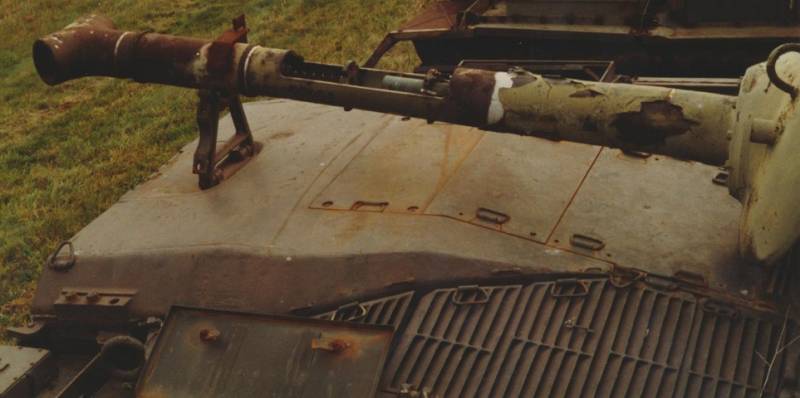
Flamethrower tank M67A1, is a training tool. Part of the casing is cut to demonstrate the internal devices. Photo Afvdb.50megs.com
A flamethrower tank was to be managed by a crew of three. In front of the body housed a driver. He had his own hatch in the roof and a set of viewing devices with the ability to install a system for night driving. The gunner and the commander were in the right side of the tower. The first had only a sight, while the second had a full-fledged turret with a circular view. The crew was supposed to use a tank intercom. In the stern niche of the turret, a short-wave radio station was installed, the modification of which depended on the type of base tank used.
The dimensions of the armored vehicle remained at the level of the base M48. The hull length was 6,87 m, width - 3,63 m, height - a little more than 3 m. The combat weight was determined in 48 t. It was possible to move along the highway at speeds up to 48 km / h, the range reached 210-215 km. The tank could overcome various obstacles.
At the end of 1953, the first prototype of a flamethrower tank was built, which was planned to be used during tests at the Aberdeen Proving Ground. The car showed itself well, thanks to which the tests were carried out quickly and without any problems. During these checks, the characteristics of the new flamethrower M7-6 were confirmed. In October, 1954, a flamethrower adopted for use. The tank itself was put into service on 1 June 1955 of the year. The armored vehicle received the official designation Flamethrower Tank M67. The T7 tower with the M7-6 flamethrower was designated the Flamethrower Tank Turret M1.
In 1955, the American industry managed to build several M67 serial flamethrower tanks, after which the production process had to be restructured. By this time the medium tank M48A2 was created and put into series, which now was to become the basis for the flamethrower armored vehicle. The M67 project has been slightly reworked to reflect the upgrade of the base tank. In addition, the existing flamethrower has undergone modernization. Its new version under the designation M7A1-6 should have had some differences from the original product. The updated flamethrower tanks M67A1 were produced during the second half of the fifties.
In 1959, a new technology modernization project started. The army wanted to bring the characteristics of the existing M48 medium tanks to the level of the parameters of the newest M60, which was the reason for updating the flame-throwing M67. Now the tank with the flamethrower was to be built on the basis of the machine M48A3, which had a diesel engine, a new fire control system, a different coaxial machine gun (M73), etc. To test this upgrade, an experienced tank, the M67E1, was manufactured. In 1962, the improved armored vehicle was put into service under the name M67A2.
Even before the official adoption of the flamethrower tank, the Marine Corps ordered the serial construction of such equipment. The first order involved the supply of 56 ready tanks T67 / M67 and 17 towers T7 / M1. The latter were supposed to be sent to military workshops and installed on existing medium-sized tanks of the M48 family. After completing this order, the KMP had a 73 flamethrower tank. The first prototype was also transferred to the customer. After the official adoption of the order appeared the ground forces. The army wanted to get 35 machines. This technique was completed before the end of the decade. At this point, the M67 serial release has stopped. In the future, there was only a modernization of the available equipment. Thus, in total, only 109 flamethrower tanks of the new model were built, including two prototypes.
As new versions of the flamethrower tank were developed, the front-line equipment was modernized. Thus, in 1963, the conversion of M67 Marine Corps tanks under the M67A2 project began. Army units, however, remained with machines version M67A1. For one reason or another, they did not update this technique.
The US Army ordered the entire 35 flamethrower tank M67A1, which was not enough for full rearmament. However, the command of the ground forces did not plan to use such equipment extensively. For example, one of the platoons that received flame-throwing tanks was based at Fort Knox and was used only for demonstration purposes. Army tanks took part in maneuvers several times, but were never used in real armed conflicts.
The main customer of M67 tanks became the USMC. The resulting equipment was transferred to the platoon of flamethrowing tanks in tank battalions. Each such platoon had nine tanks in three divisions. In addition to tanks, flamethrower platoons had an auxiliary machine, the M4, based on a standard army truck. The task of this technology was the maintenance of combat vehicles, including the delivery of fire mixture and filling tanks of the tank.
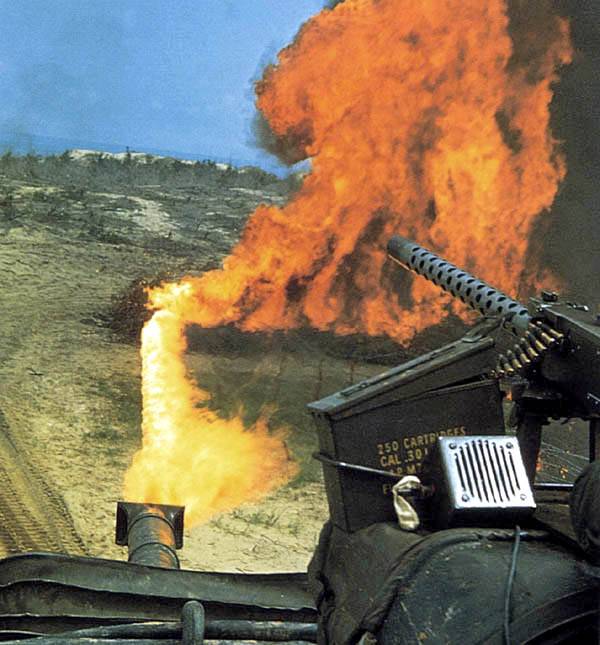
The use of a flamethrower. Photo of Wikimedia Commons
After the outbreak of the Vietnam War, the Marine Corps transferred part of the flamethrower tanks to a new theater of military operations. At the same time, no more than 30-36 flame-throwing tanks were at the front at the same time. Despite the small amount, this technique was able to show all its advantages and disadvantages. In the course of active operation in the conditions of a real conflict, the troops were able to test armored vehicles, as well as form optimal methods for their combat use.
As before, flamethrower tanks were used to directly support the troops. In addition, they often worked together with linear tanks in order to strengthen the units. In the context of the combat use of M67 tanks, the battle for Hue, which took place at the beginning of 1968, is of particular interest. At the beginning of the attack, two tanks M67 and two M48 were able to break through to the city, where they supported infantry for the next few days without the possibility of immediate reinforcement. However, the lack of supply of fire mixture led to the fact that the M67 tanks most of the time played the role of moving firing points with machine-gun armament.
Due to the small number of M67 tanks, the US ILC were usually used singly or as part of small formations, which accordingly limited the effectiveness of their combat work. In addition, the need to deliver fire mixtures reduced the range of tasks to be solved. Because of this, the use of flamethrower tanks in long-term operations at a great distance from bases was excluded. Another negative factor was the widespread use of incendiary aviation bombs: such weapons drastically reduced the need for ground-based flamethrower weapons.
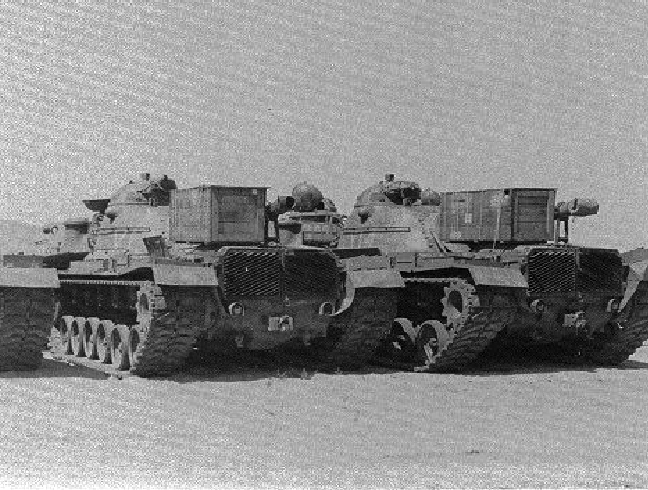
M67A2 flamethrower tanks in storage, 80-e. Photo of Wikimedia Commons
Despite all the limitations, the American forces managed to find areas where M67 could show its best. Such equipment was actively used in the protection of bases and convoys, including for solving non-standard tasks. With the help of a tank flamethrower, it was possible to destroy potentially dangerous thickets around the camp or near the road. When accompanied by columns of technology, flamethrower tanks have proven to be a good tool for dealing with the ambushes and enemy firing points.
The operation of the M67 flamethrower tanks of all modifications lasted until the early seventies. In 1970, the army decided to abandon such equipment due to not very high performance, as well as moral and physical obsolescence. As a replacement for the existing M67A1, M132 vehicles based on the M113 armored personnel carrier were considered. Soon the command of the Marine Corps also began to discuss the possible abandonment of flamethrower tanks. At the end of 1971, a proposal was made to remove such vehicles from service due to insufficient performance and operational problems. In the middle of 1972, an order was issued to remove M67 from service. Over the next two years, all available vehicles of this type were written off.
One of the reasons for the rejection of the M67 was the obsolescence of the M48 tank chassis. In this regard, at the beginning of the seventies, the ILC considered the possible installation of the existing T7 / M1 towers on the chassis of the new M60 tanks. Nevertheless, calculations have shown that such a project will come out too expensive. Despite the need to maintain flamethrowing tanks, the marines were forced to abandon this technique.
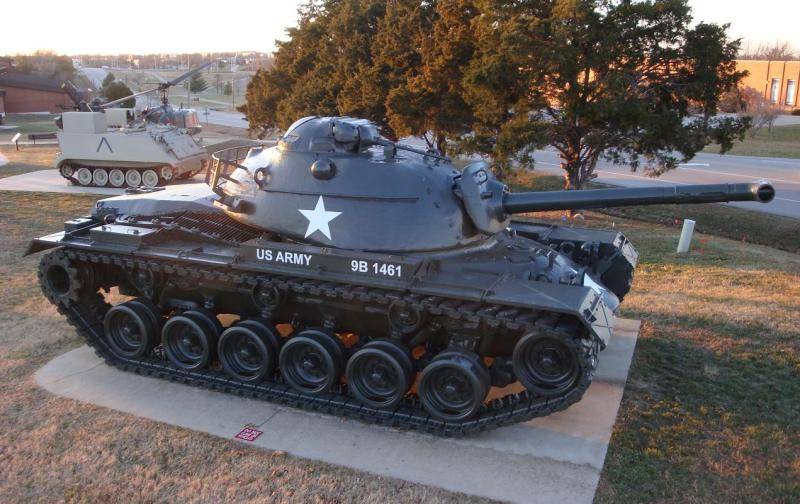
Tank M67A1, standing as a monument in the School of Engineering School (Fort Leonard Wood, Missouri). Photo of Wikimedia Commons
About seven dozen flamethrower tanks, remaining at the disposal of the Marine Corps, by the mid-seventies were written off. Some of the machines were sent for disassembly, others were stored. According to some reports, part of the serial M67A2 remained on the storage bases until the first half of the eighties. In the future, apparently, this technique was removed from storage and also sent for recycling. In this case, several tanks were able to avoid the sad fate of becoming museum pieces or monuments.
For a long time, the US Army and Marine Corps used flamethrower tanks to solve various combat missions. Soon after the end of the Second World War, a new project of such a technology was launched, but real results were obtained only by the middle of the next decade. Moreover, for the first time to participate in battles new tanks M67 succeeded only by the end of the sixties. Just a few years after that, such equipment was abandoned due to its obsolescence. For various reasons, the United States no longer dealt with flamethrower tanks. M67 was the last member of its class in the US military.
Based on:
http://armor.kiev.ua/
http://afvdb.50megs.com/
https://fas.org/
http://militaryfactory.com/
http://tanks-encyclopedia.com/
Hunnicutt RP Patton: A Median of Tank Volume I. - Novato, CA: Presidio Press, 1984.
Ardashev A.N. Flame-incendiary weapons. - M .: Astrel / AST, 2001.
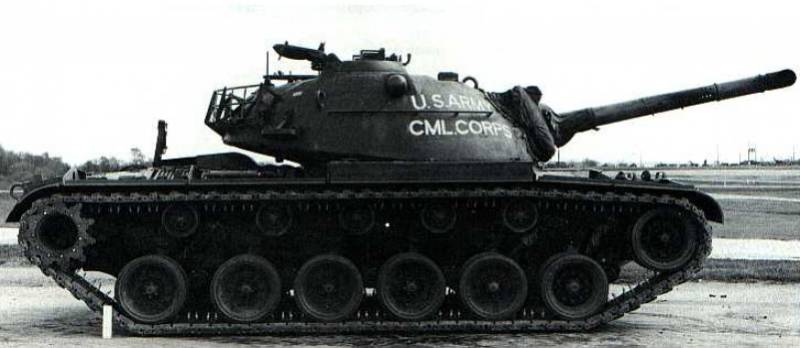
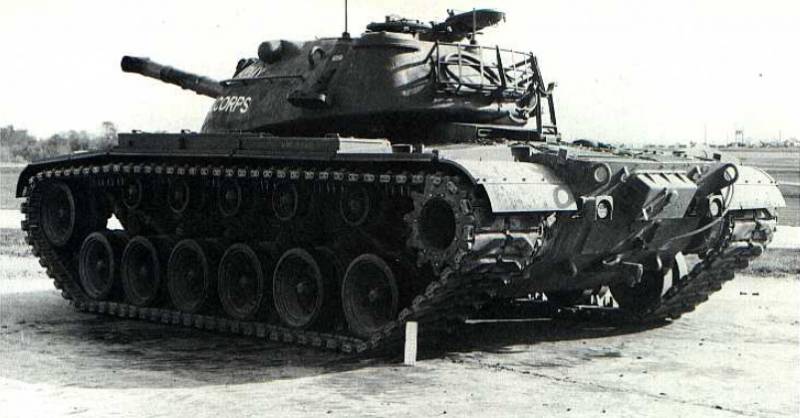
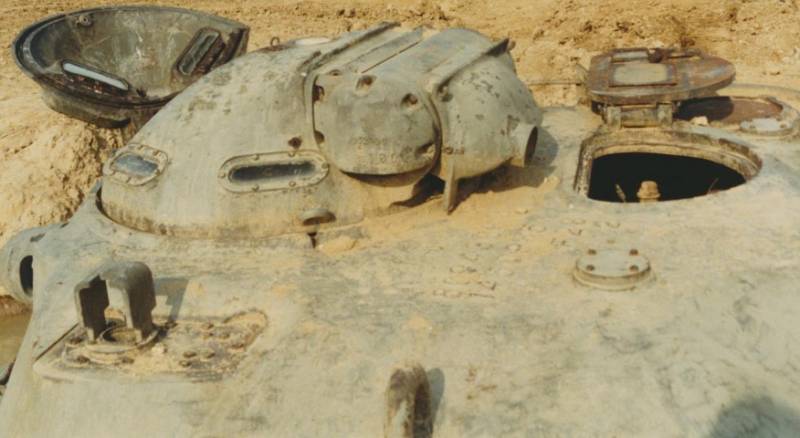
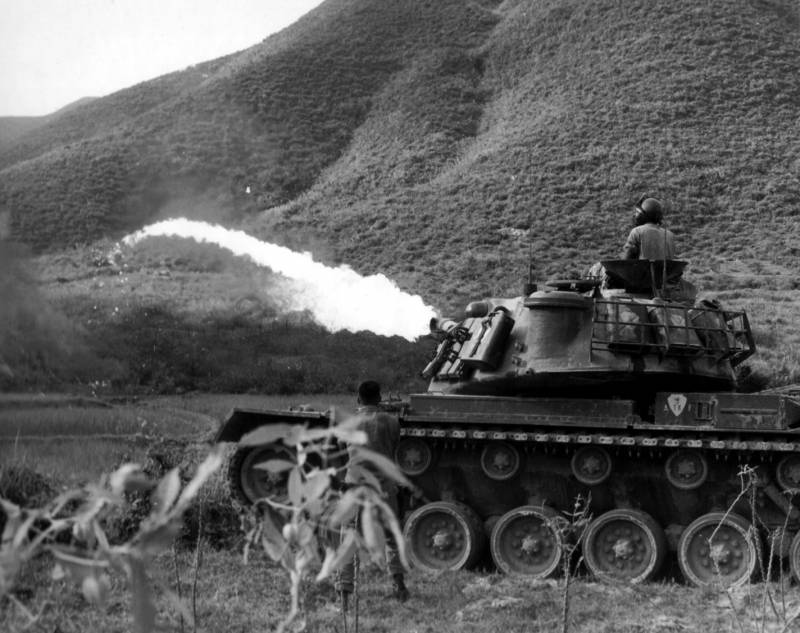
Information